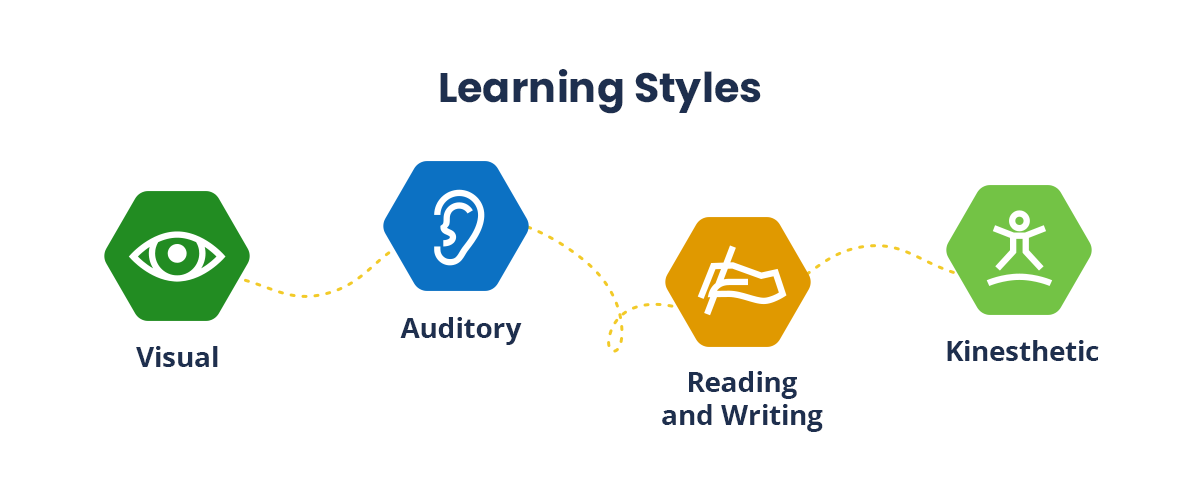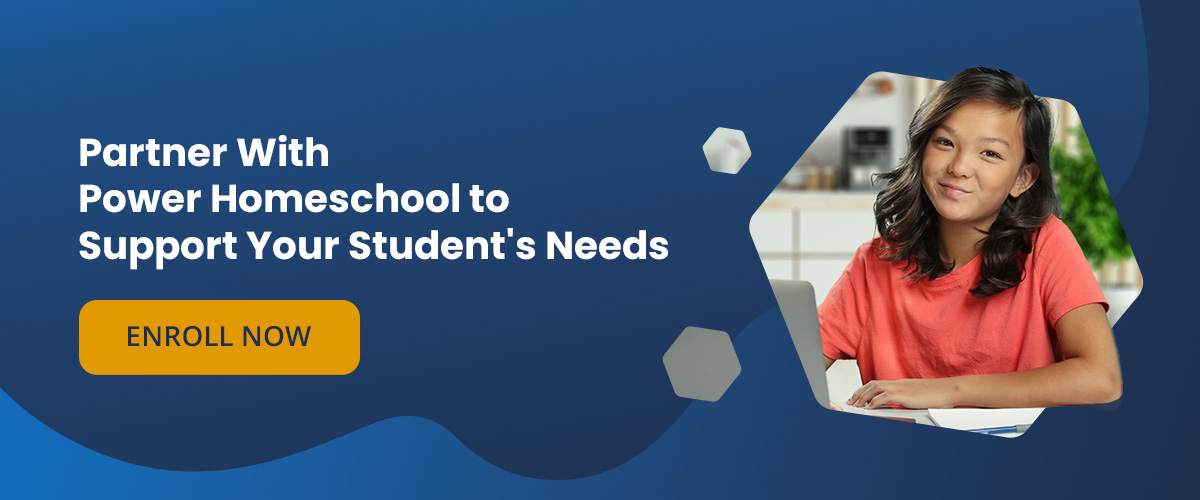The concept of learning styles has gained momentum for decades as parents and teachers see the results of presenting information in specific ways for different students. Today, 89% of teachers believe in adapting their teaching to a student’s preferred learning style.
Learning styles are vital in homeschooling — when you homeschool, you have the flexibility and resources to personalize the experience for your student. Knowing how they assimilate information makes the process even more impactful.
Understanding Learning Styles
Learning styles are a person’s natural way of absorbing, processing and retaining new information and skills. Every child has different preferences. Some retain facts and details better when they hear a lecture. Others learn more when they can ask questions. Some like to read text and process it quietly. Many work best with a combination of these methods.
Understanding your student’s learning style matters when homeschooling, as you can tailor lessons and content to match their strengths. Students with access to educational resources that complement their learning style have significantly higher pass rates than those working with incompatible resources. You can determine which study techniques to include in your curriculum by identifying how your student learns best.
What Are the Different Learning Styles?
Though many subcategories exist, traditionally, there are four learning style types — visual, auditory, reading and writing and kinesthetic. This model recognizes the diverse ways in which students process information. While it differentiates distinct learning styles, many students learn best with a combination of the four.
Here are the four learning styles in the VARK model.
1. Visual
Visual learners understand information best when you present it in a graphic format, such as diagrams, charts, symbols and colors. They thrive when they have a clear picture of visual hierarchy, and it’s often easier for them to work with images than words. Use images to show them the relationships between concepts, like demonstrating a biological process in a flowchart.
2. Auditory
Auditory or aural learners respond well to sound. They often have a good sense of rhythm, enjoy music and learn best from verbal presentations, like lectures. They work well in collaborative settings where they can discuss concepts. Auditory learners benefit from reading aloud. Repetition and revisiting recorded coursework are excellent study tools for these students.
3. Reading and Writing
These learners have a strong relationship with the written word. They get fantastic results from worksheets, written presentations and other text-heavy resources. They are excellent note-takers who perform well when referencing a text. They may be avid readers in their leisure time and have a talent for translating abstract concepts into words, meaning they often perform well on written assignments.
4. Kinesthetic
Kinesthetic learners are physically active and hands-on, happiest when they can use their senses to explore the coursework. They learn through trying things for themselves and engaging with tactile representations of the information. The best options for introducing new information to a kinesthetic learner are practice, simulations and firsthand experience.

How Acellus® Courses Support All Learning Styles
Technology has revolutionized education, improving the learning experience for homeschooled students. Whether you’re currently homeschooling or considering a change, technological tools allow you to meet your student where they are, tailoring a flexible, self-paced online homeschooling program that appeals to their learning style.
The Acellus® learning system enriches the student experience with various resources that appeal to each learning style. You can choose from hundreds of courses to find the perfect fit for your student. Consider some of the many ways Acellus® supports various learning styles.
- Vectored Instruction™: The Vectored Instruction™ tool identifies gaps in student learning and provides lessons on foundational concepts. It prepares them for more advanced coursework by automatically revisiting missed or forgotten information.
- Video instruction: Video homeschooling content is one of the most effective ways to appeal to a student’s learning style. It’s interactive, covers a range of learning styles and allows students to engage with the coursework. You can pause the video to incorporate activities specific to your student’s learning style and enjoy visual demonstrations instead of relying solely on text and diagrams.
- Prism Diagnostics®: The Acellus® Prism Diagnostics® tool recognizes when students need help understanding concepts and provides personalized assistance. Once the tool has identified a deficiency, it responds immediately with customized instructional videos to address the deficit. Every student gets personalized instruction when they need it most.
- Diverse course offerings: Acellus® offers hundreds of interactive courses to engage students of all ages. Find the course that appeals most to your student so they can explore their passions, nurture their talents and learn at their preferred pace.
Learn More About Your Student’s Learning Style
The first step to supporting your student is identifying their learning style. Experiment with visual, auditory, written and hands-on material and monitor the results. Discuss the options with your student and ask for their input on what works best for them. Remember, students often benefit from a combination of learning styles, so observation is a valuable homeschooling tool. Watch your child during unstructured time and note what they choose to do and how they do it.
Take an unbiased look at your student and observe their weaknesses. The areas they find challenging are potential clues to their learning style. For example, a child who struggles to interpret written instructions might be an auditory learner. Once you know which approaches best suit your student, you can incorporate them in the following ways.
- Visual: Draw with your child and teach them how to make flowcharts and diagrams. Incorporate video instruction wherever possible and usual visual organization techniques like color-coded study notes.
- Auditory: Give your student verbal explanations of the coursework and discuss what they learn. Encourage them to read, repeat information aloud and use mnemonics when studying.
- Reading and writing: Teach your student to make glossaries for the concepts they cover in coursework and use lists to help them study. Have them rewrite lessons in their words.
- Kinesthetic: Act out or role-play new information with your child and take them on field trips whenever possible. Give them freedom of movement, even during study periods. Set up science experiments so they can create results firsthand. Incorporate frequent breaks to help them stay focused.
Partner With Power Homeschool to Support Your Student’s Needs
Homeschooling allows you to experiment with different learning styles and tailor your student’s education to their strengths and growth areas. There’s plenty to consider, but you can balance results and simplicity with Power Homeschool. Our leading online homeschooling platform supports and empowers parents to provide the highest-quality education.
Every child is unique, and their education should reflect their needs and personality. Our Acellus® courses leverage innovative technology to go beyond traditional teaching. You can identify challenges and engage your student with professional video lessons. What are you waiting for? Enroll now and experience the Power Homeschool difference for your family.



